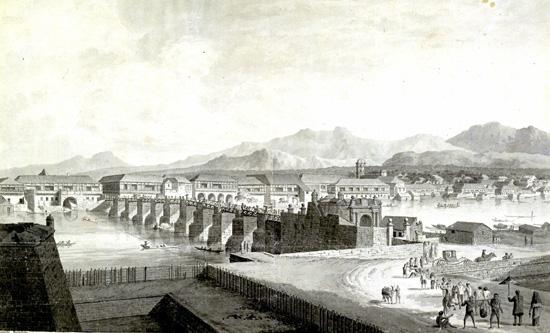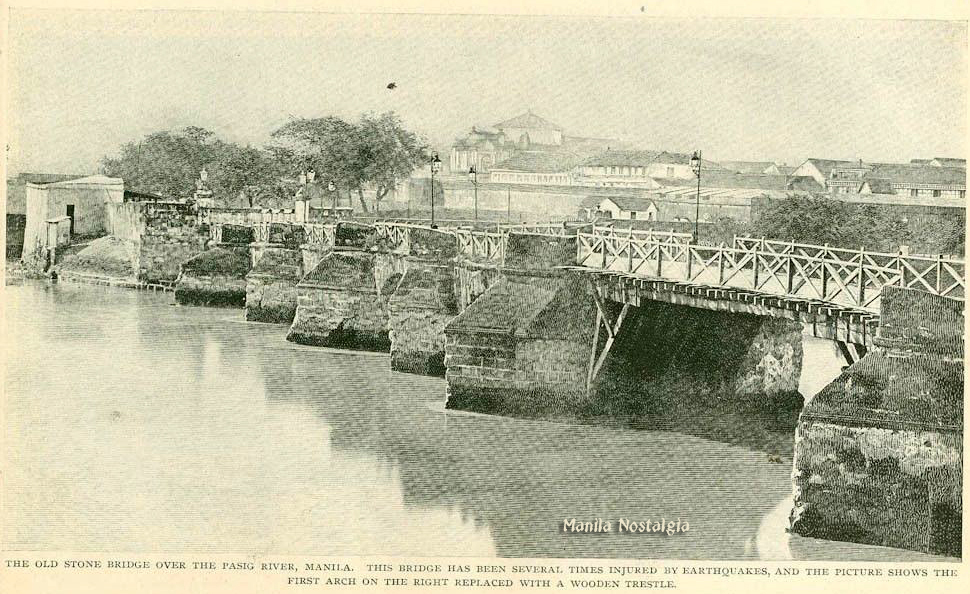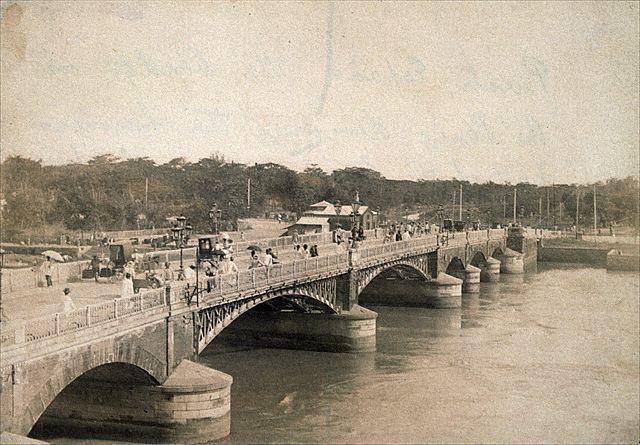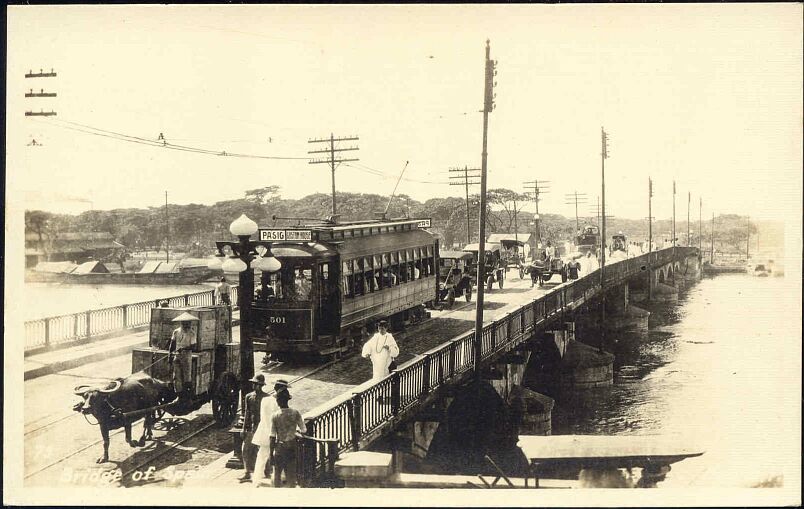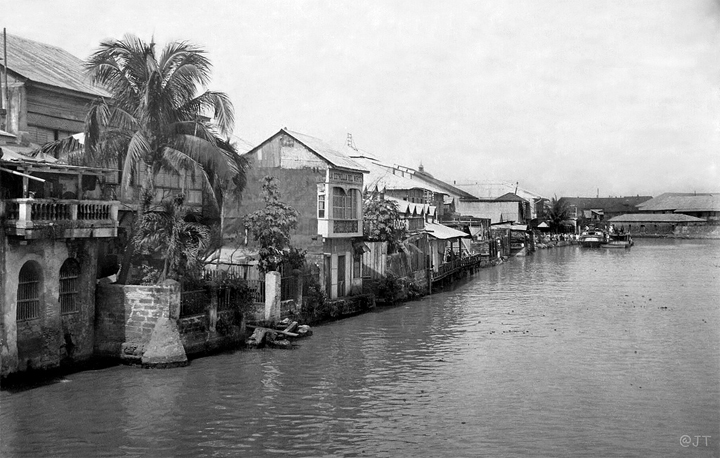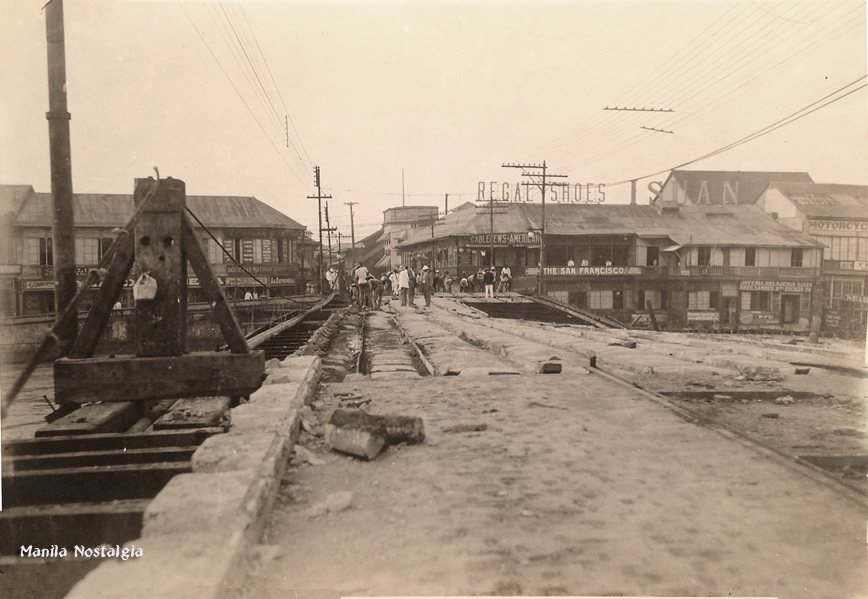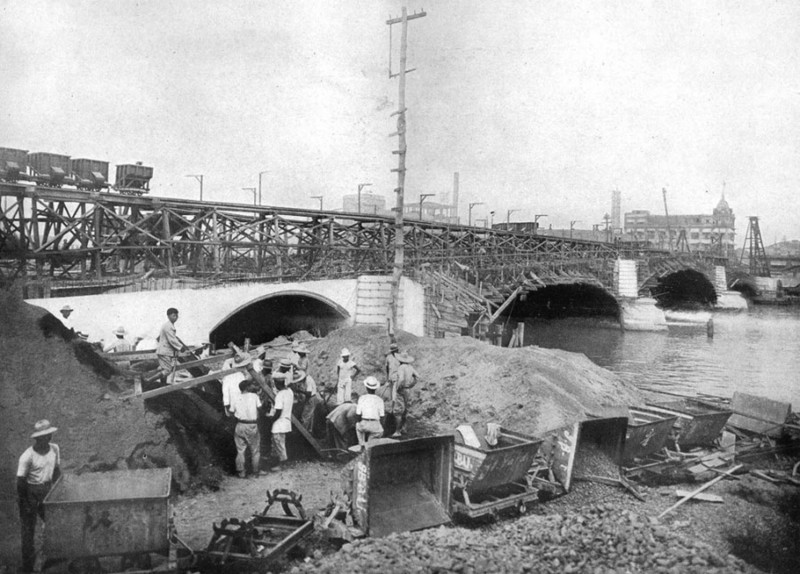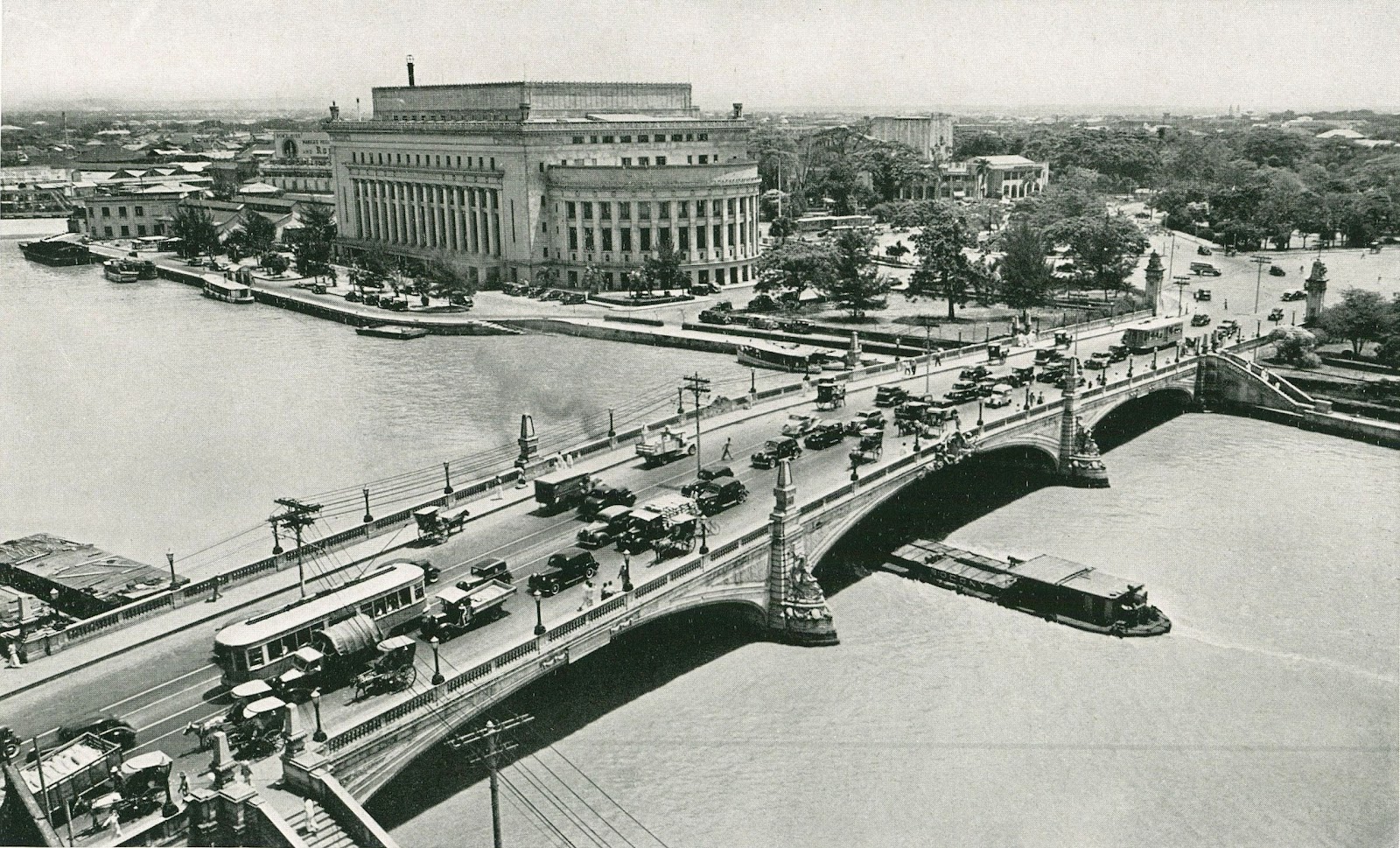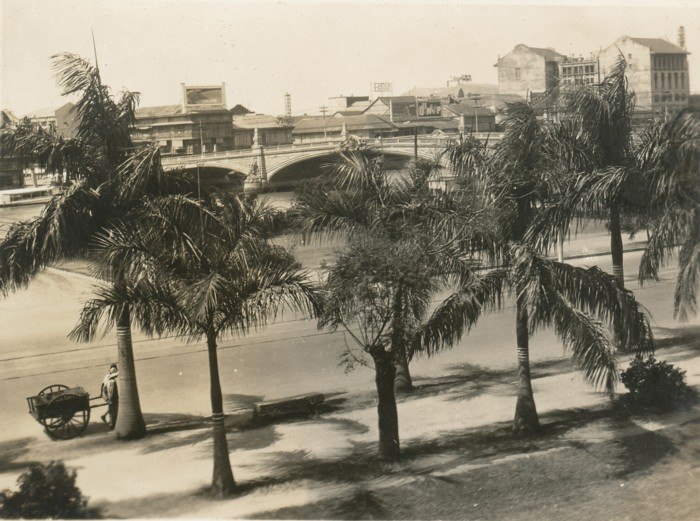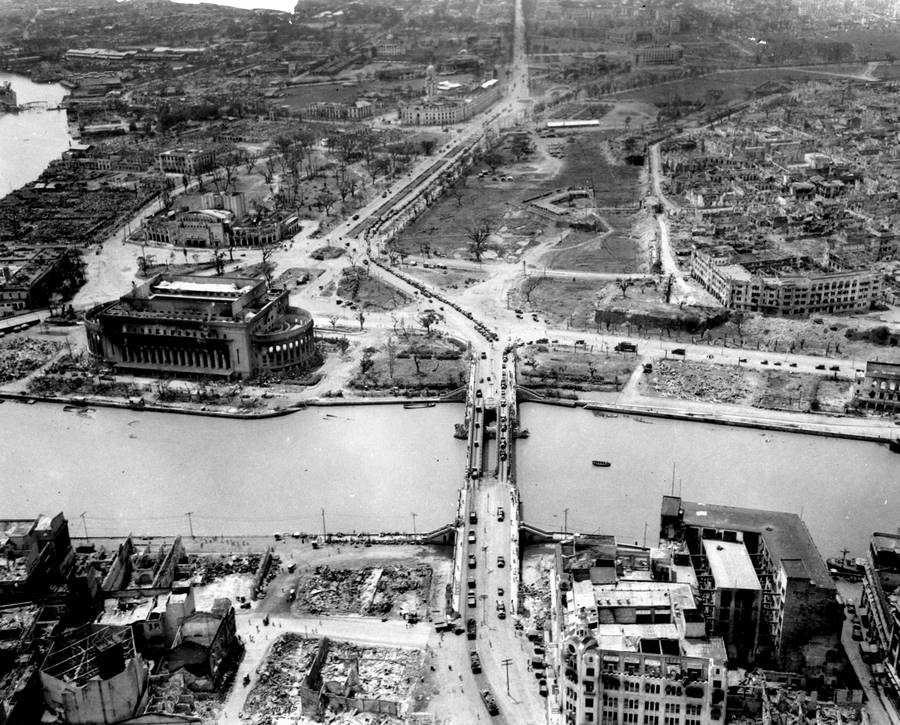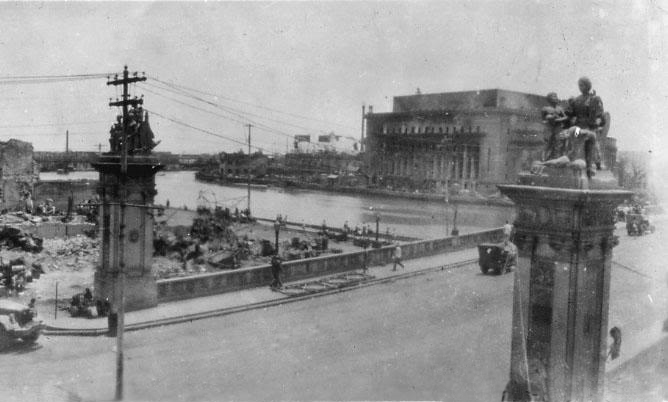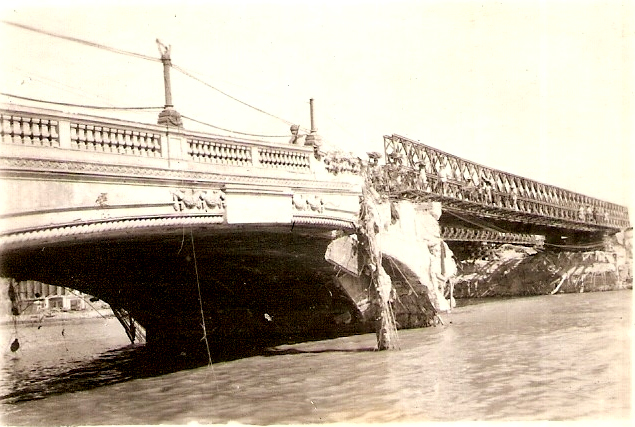Manila is dissected north and south by the Pasig River and of course, many esteros. As a matter of fact in the early 1900s, Manila had been referred to as “Venice of the Orient”, I guess before they called it the Pearl of the Orient, but I digress.
Living in Manila in the early Fifties and Sixties, we used to make our way to the stores, restaurants and theaters in the Binondo and Santa Cruz districts and specifically, the Escolta. Practically every day I would cross the Jones Bridge towards Plaza Moraga, turn right and head down to our store, the Gem Gift Shop, as well as all the great stores of the time (see my post on the Escolta). I took the Jones Bridge for granted, just another way of getting from one spot to another, not realizing its great history. So, in doing some research, I’ve been enlightened and delighted by what I’ve uncovered.
The Jones Bridge was designed by Juan M. Arellano (see his story on my post of the Manila Post Office). It was started in 1916 and finished in 1921, however, to really appreciate this once beautiful pre-war structure, we have to mention its forefather, the Bridge of Spain (Puente de España) so let’s go back in history a bit.
The first bridge to ever cross the Pasig River was the Puente Grande, a ten-span bridge opened in 1630 by the Spanish colonial government. Work on the bridge started in 1626 under the rule of Spanish Governor Fernando de Silva who reported that the city had decided to build a stone bridge over the river. The beam bridge connected Intramuros with the business district of Binondo, making the travel across much easier and faster than the ferry service that existed before.
The bridge was completed in 1630, under the rule of Juan Niño de Tabora. The bridge was built without cost to the treasury, as the Sangleys (Chinese) had paid for it since it relieved them of ferryboat charges during their frequent daily business travels to Binondo.
In 1814, the wooden superstructures were replaced with stone arches and the stone piers were strengthened. The bridge was also called Puente de Piedra (Stone Bridge), while the old name remained popular. The bridge was damaged when the center piers of the bridge sank during the earthquake of June 3, 1863, one of the strongest to hit the Philippines that leveled most of Manila.
While the bridge was being assessed and repaired, a temporary pontoon bridge called Puente de Barcas (Bridge of Boats) was constructed one block below on Calle Rosario. In the middle of the bridge, the spans were supported by cascos, or large flat-bottomed boats common in the area.

Puente de Barcas (Bridge of Boats) In the background are the newly constructed Santo Domingo Church and Magellan monument.
During the reconstruction of the bridge, the two piers near the center were removed lessening the number of spans to eight. Two steel ribbed central spans were used to span the space left by the removed piers. The bridge was opened on January 1, 1875 and was renamed as Puente de España.
The bridge stood as a strong and picturesque monument to the ability and engineering skill of the early Spanish engineers. Its massive arches of stone supporting a paved roadway that withstood the heavy traffic demands, floods and typhoons of nearly three centuries, and its pleasing lines and soft coloring blended delightfully with the verdure-garbed wall of the old walled city of Intramuros.
A triple-branched street lamp made by Lacarrière. 19th century. AHN José Echeverría, the engineer posted in Europe, was commissioned to supply the street lamps for illuminating the “Puente de España” over the Pasig River.
An eyewitness account from Clay McCauley published in “A Day In the Very Noble City, Manila” – 1899.
“Crossing the Bridge of Spain near the noon time is no speedy achievement. Moments often lengthen into minutes before one can leave the Escolta and enter the long procession towards the bridge. Patient American soldiers , serving as policemen, in time found a place for us in the southward moving line of carriages. The progress was so slow that there was ample opportunity for study of the manifold types of humanity moving on the foot and carriage ways. Crowds were there, always coming and going, and perpetually renewed: rich and poor, in silks, in linen and in rags; of high and low degree; civil, military and clerical; freemen and prisoners of war; merchant and coolie; general and menial; now and then a lady of America or Europe, confortable in carriage, while close by trudged the dark-skinned native woman bearing aloft some burden. Denizens of all the continents seemed to have been gathered into the moving throngs. The bridge is a handsome structure more than four hundred feet in length. It is composed of five arches, some of stone and some of iron, all resting on massive masonry piers. From it, the busy river east and west makes a diverting and fascinating picture.”
“The sun was setting as we drove over the Bridge of Spain, the lamps were lighted and a continuous procession of vehicles was crossing it, which made progress slow. On the right bank a row of white balconied houses hung over the river and a cocoa-nut palm swayed on the light breeze, which came down the river as the sun set. There were tables on the balconies, and squares of brilliant glass in the windows of the Spanish Casino gave a pleasant tropical impression to the scene. To the right the outlines of convents, domes, and towers stood in relief against the gorgeous, golden-red sunset, and below them and inclosing them the dark, massive walls of the ancient city.” From “Unofficial Letters of an Official’s Wife” by Edith Moses (1900)
The bridge remained unchanged until 1901 during the American Colonial Era when the bridge was widened to accommodate more pedestrians and vehicles, even with the construction of nearby Santa Cruz Bridge that was started in 1900. With the addition of additional lanes of traffic, the street lamps on the bridge were removed. In 1905, tracks were laid on the bridge to accommodate the “tranvias”, a streetcar system that ran throughout Manila.
In September, 1914, a terrific typhoon ensued with nonstop rains that flooded the streets of Manila and overflowed the Pasig River. The flood damaged the center pier of the bridge and was removed. A temporary truss bridge was installed after a few months that lasted until the new bridge was completed almost 7 years later.
“Plans have been officially approved for repairs to the Bridge of Spain to comprise a temporary span to replace the destroyed by the flood early in September. The new work to be put in place on the bridge is designed to carry light traffic not to exceed 8 tons, to meet demands of the commercial section of city adjacent to the bridge until such time as the proposed bridge at the end of Calle Rosario extended (Jones Bridge) shall have been constructed. The acting city engineer of Manila has decide that the city can rebuild the destroyed span of the Bridge of Spain more cheaply than the contractors who offered bids. The lowest bid presented was $19,300. The city proposes to do the work for $12,500.” [Source: Report of the Philippine Commission 1900-1915]
The repair ended up costing ₱22,555.38.
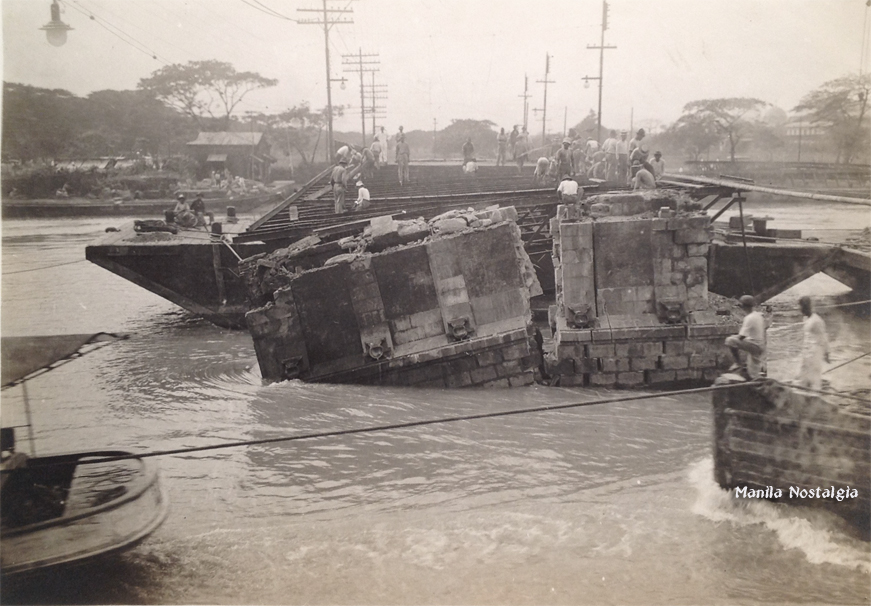

Bridge of Spain repaired-1914. The “new” Jones Bridge project had just been started to the right where the ship was moored.
This rare map clearly shows both the Bridge of Spain and Jones Bridge parallel to each other. The Bridge of Spain flows into Calle Nueva and the Jones into Calle Rosario.

The Bridge of Spain shows the temporary structure on existing foundation. Above that is the new Williams Atkinson Jones Bridge, c.1921. (courtesy J.Tewell)
Below, another perspective of the two bridges taken from Paseo Magallanes, c.1921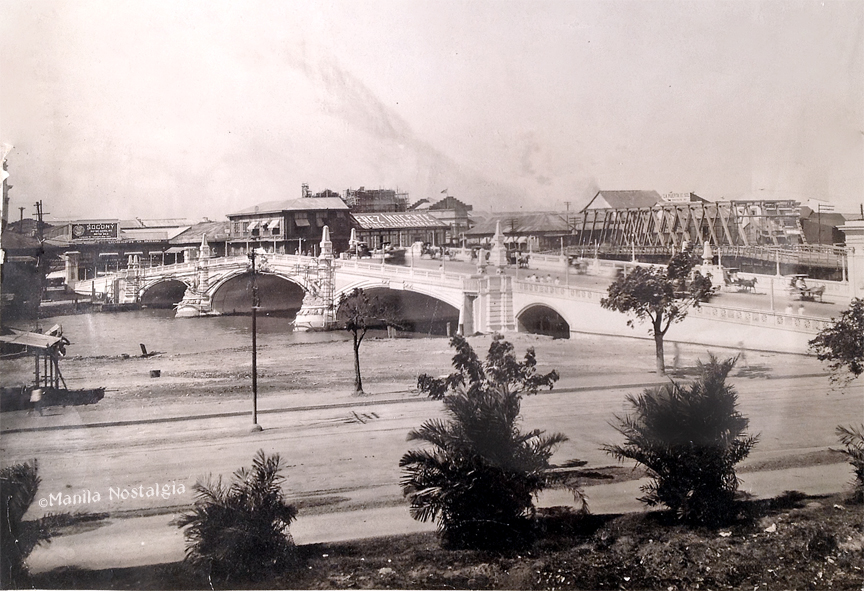 In this extraordinary photo below, you’ll see the newly opened Jones Bridge, the statue adornments on the pedestals still being completed. Just to the right of it, you will note the old Bridge of Spain footings have not yet been removed. A dredger floating next to the foot on the right appears to be doing the removal.
In this extraordinary photo below, you’ll see the newly opened Jones Bridge, the statue adornments on the pedestals still being completed. Just to the right of it, you will note the old Bridge of Spain footings have not yet been removed. A dredger floating next to the foot on the right appears to be doing the removal.
In 1916, Arellano was commissioned to design the new bridge. Construction was started on a neoclassical reinforced concrete arch bridge across Calle Rosario on the site of the old temporary Puente de Barcas. The span was renamed as Jones Bridge after former Virginia Rep. William Atkinson Jones, who was the principal author of the Philippine Autonomy Act of 1916, a bill assuring the future independence of the Philippines. The bridge was completed and opened for traffic in 1921. Soon after, the Bridge of Spain was dismantled ending its long history.
The newly designed bridge by Arellano was a magnificent example of beauty and architecture, rivaling any found in the United States or Europe. It was not only graceful but featured four elaborate statues, La Madre Filipina, guarding the entrances. Arellano embellished the piers with a statuary of boys on dolphins, similar to the embellishments on the Pont Alexandre III in Paris (which he visited on the way home from America). The lampposts, balustrades, finials and moldings were similarly treated.
Update: 7/28/2013: The dolphins were created by a well-known German sculptor by the name of Otto Fischer-Credo. Fischer-Credo was born in Berlin in 1890 and studied at the Akademie der Kunste. He attended the Royal Academy of Art in Paris from 1919-21 and lived in the Philippines, Mexico, Cuba and the USA. Source: Public Art Registry, City of Vancouver, B.C. (For more information of Otto Fischer-Credo, please read comments below submitted by one of my readers, “Vancouver Brent”. Quite interesting !
Here’s a recent article I wrote devoted to the works of Otto Fischer-Credo.
Out of the four statues of the La Madre Filipina, only three survived to this day. One statue was placed near the Rizal Monument in Luneta Park. The other two statues guard the entrance of the Court of Appeals Building in Ermita, Manila. However, the fourth statue mysteriously disappeared, no doubt destroyed during the war.
The Japanese enter Manila on January 2,1942 and occupation lasts over three years. Declaration of Manila as an “Open City” saves most of our architectural heritage however, in order to impede the U.S. forces, the Japanese destroy the beautiful Jones Bridge during the Battle of Manila in February 1945. The photo below shows one of the Jones Bridge sculptures adorned with Japanese flags during the occupation.

A temporary Bailey bridge was constructed to allow traffic to access both sides of the Pasig and within a couple of years, the new Jones Bridge was built.
The bridge was reconstructed after World War II through the Philippine Rehabilitation Act of 1946. The original beauty of this marvelous structure was abandoned for a more practical yet completely unaesthetic design. It’s just too bad that Arellano’s legacy had not been carried forward to allow succeeding generations to see how beautiful Manila was in those days of “The Pearl of the Orient”. Again, that perfect Tagalog word, “Sayang”.
A recent photo of the Court of Appeals building where two of the Jones Bridge sculpture now reside.
The remaining statue “La Madre Filipina” was relocated to its rightful place of honor in Rizal Park by the Luneta.
Please also check my online Facebook site devoted to memories, places and people of bygone days of Manila. Come and join us ! Manila Nostalgia

